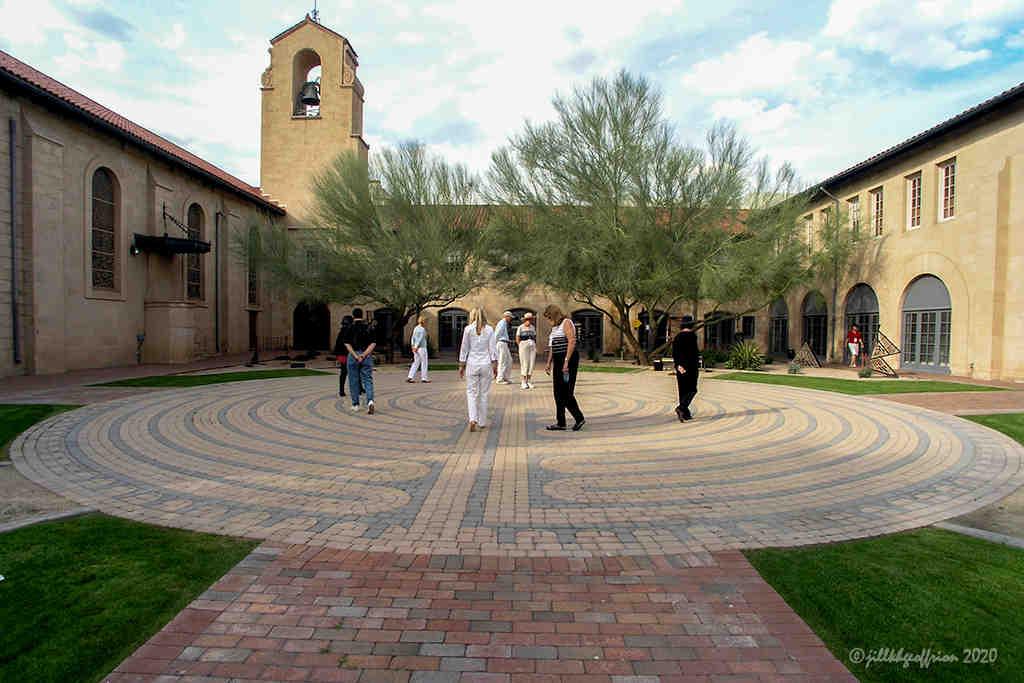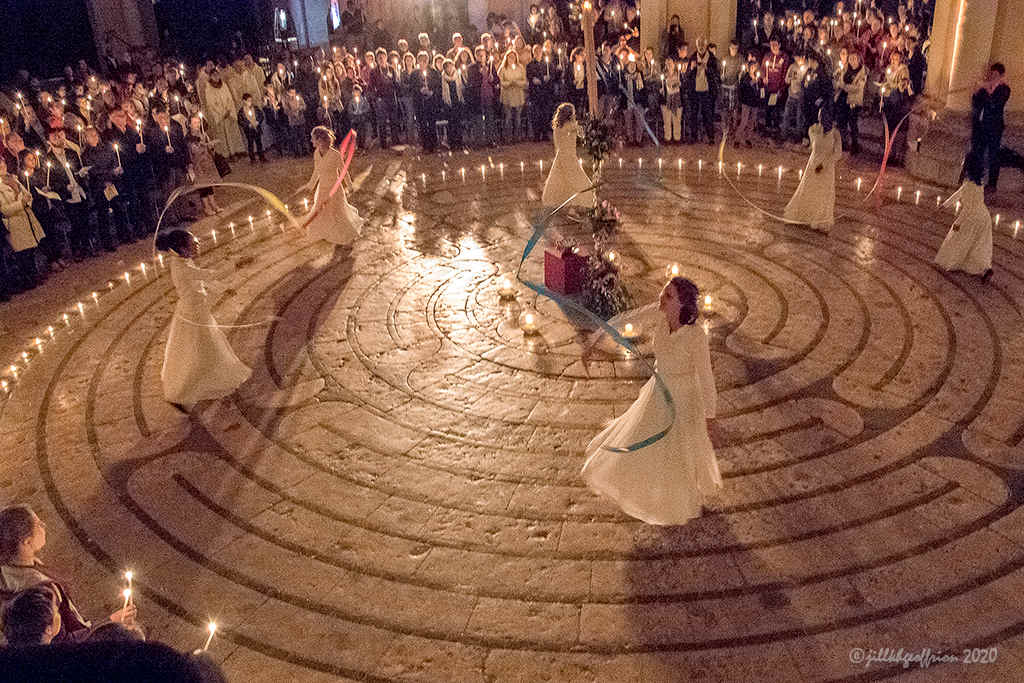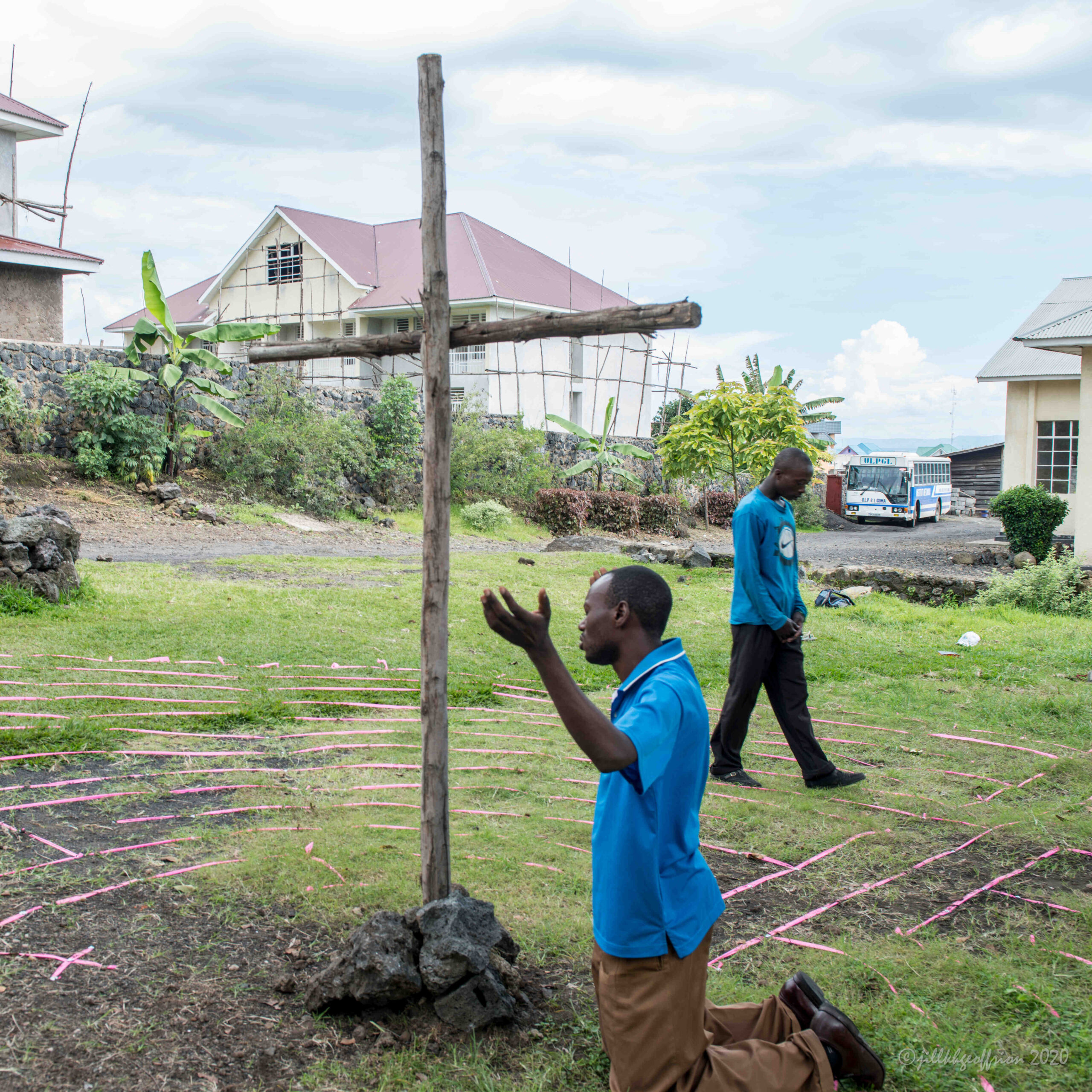A church labyrinth can support and enhance the life of a congregation and its mission in many different ways.

A labyrinth can be a wonderful outreach and hospitality tool that communicates the warm, open spirit of a church. Having a labyrinth that is available to the larger community is a wonderful way of welcoming the public onto the church property or into the building. Sharing this sacred tool communicates the congregation’s interest in the spiritual health of its members and neighborhood. One church close to a community college welcomes students, staff, faculty and administrators to its labyrinth each month through a partnership with the Office of Campus Ministry at the college. Professors of religious studies and history classes bring students to introduce them to the labyrinth as well.
The possibilities of labyrinth programming are as varied as the imaginations of church members. For instance, labyrinths have been used effectively as extensions of a congregation’s prayer ministry during a 24-hour fast for world hunger. Sunday school classes of adults, youth, and children all enjoy using the labyrinth as they move while considering what they are studying and its applications. During different liturgical seasons and feast days, special labyrinth events support the spiritual health of all those who come. Labyrinths have been used effectively during weddings, funerals, and baptisms. Youth group members in a confirmation class at one church enjoy walking the labyrinth as they discern their next steps of faith.
Congregational leaders successfully use their labyrinths for discernment, conflict resolution, and celebration. One pastor prays a labyrinth each week before starting her sermon preparation. A ruling board that had reached an impasse walked the labyrinth together as a way of inviting each person to look at a situation from a new perspective. Afterward, they found they could continue the discussion that had been stalled. When a project is completed, committee members at one church walk the labyrinth together while talking about the meanings of the work they have done.

The labyrinth is a tremendous resource for the pastoral care ministries. Members at churches with labyrinths often speak of walking to find inner healing and bringing others to the labyrinth for this purpose. Whether encouraging engaged couples to use the labyrinth as they consider what it will mean to walk together in life, offering special labyrinth events during periods of congregational, community, or international crisis, or encouraging individuals to pray the labyrinth on behalf of those in need, congregations find that having a labyrinth allows them to enhance their ministries of outreach and love.
Members of churches with labyrinths express gratitude for the opportunity to engage in this form of prayer on a regular basis. They report their faith deepening as they use the spiritual discipline of labyrinth walking over time. Opportunities to introduce others to the labyrinth ministry of their church seem to flow naturally and fruitfully.
Requests for a congregational labyrinth often are initiated by a church member who has had a meaningful experience while praying a labyrinth. Rather than explaining the labyrinth to those who have the power to decide about how the congregation might initiate a labyrinth ministry, take these people to a local labyrinth and facilitate a labyrinth experience. When a committed group oversees the purchase or installation of a labyrinth the church’s ministry has the potential to thrive and grow. Having a plan for maintenance of the labyrinth is crucial to the long-term success of any labyrinth ministry.

“God, You show me the path of life, in your presence there is fullness of joy; in your right hand are pleasures forevermore.”
Psalm 16: 11
